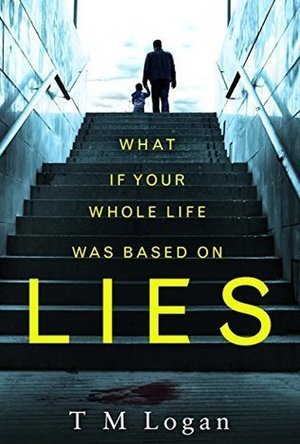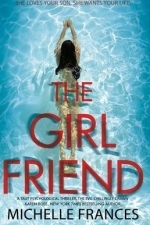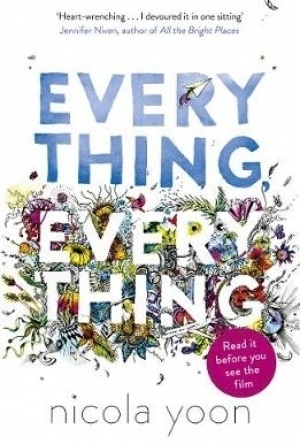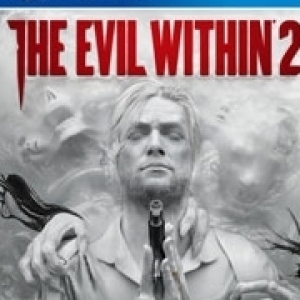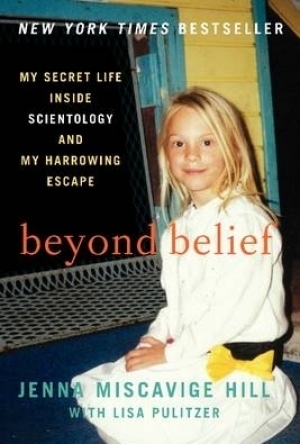Search
Search results
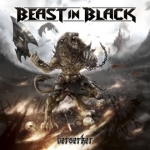
Berserker by Beast in Black
Album Watch
The metal world was in rage when Anton Kabanen parted ways with his former band BATTLE BEAST back in...
Metal

Road Riot Combat Racing
Games
App
Road Riot is the global sensation that defined the Combat Racing genre! This addictive,...
Wild, creepy & a little stressful
When Joe Lynch and his young son, William, spot his wife's car while out driving, they decide to surprise her. Instead they see his wife, Melissa, fighting with a friend, Ben. Joe knows he should help Melissa, but when he goes to confront Ben, it goes horribly wrong. The two fight and after Ben hits him, Joe pushes him back and Ben falls and hits his head. At the same time, his son has an asthma attack--and realizing he doesn't have William's inhaler--Joe has to make a choice: race home for the inhaler or stay and make sure Ben is okay. He chooses his son, setting off a chain of crazy events that will forever alter the course of his life.
"I put the car in gear. Made a spur-of-the-moment decision that would change my life. 'Let's go and surprise Mummy.'"
This was an odd book that messes with your head as much as all the insane events seem to do to Joe's. It got off to a slow start for me, and I almost didn't keep reading, but I have a terrible time putting any book in a "DNF" pile, and of course, this one picked up and got pretty exciting about halfway through. (This only adds to my inability to ever not finish a book.)
The main shtick with this one is sort of an unreliable narrator/unreliable plot, as you really don't know who or what to believe as you read. Hence the title, obviously. As it all happens we have Joe, who sort of bumbles along, our hapless narrator, who seems to think he's in control, but really, just no. Poor guy, he's certainly not the brightest--just this clueless guy whom I had a tough time rooting for, hence my inability to really get into the book.
Yes, most of the cast of characters around him are lying to him in some fashion, but still. After Joe leaves Ben in the parking garage to save William, he finds some weird and cryptic posts on his Facebook page, because (of course) he lost his (unlocked) cell phone during his altercation with (obviously tech-savvy) Ben who runs (wait for it) a technology firm. Then Melissa reveals to him that the wealthy Ben has been pining after her for ages, despite that fact that Ben's wife, Beth, is Melissa's best friend. Things unravel from there. I'll admit that they don't necessarily happen predictably, but they do happen in a crazy fashion, so be prepared to suspend a lot of your disbelief.
The book is kind of wild, a little creepy, and there's a good twist at the end, which bumped my rating up a half bomb. This wasn't a particularly fun read for me--it sort of stressed me out--and I didn't really like any of the characters, but once it picked it up, it was at least interesting.
I received a copy of this novel from the publisher and Netgalley in return for an unbiased review (thank you!).
"I put the car in gear. Made a spur-of-the-moment decision that would change my life. 'Let's go and surprise Mummy.'"
This was an odd book that messes with your head as much as all the insane events seem to do to Joe's. It got off to a slow start for me, and I almost didn't keep reading, but I have a terrible time putting any book in a "DNF" pile, and of course, this one picked up and got pretty exciting about halfway through. (This only adds to my inability to ever not finish a book.)
The main shtick with this one is sort of an unreliable narrator/unreliable plot, as you really don't know who or what to believe as you read. Hence the title, obviously. As it all happens we have Joe, who sort of bumbles along, our hapless narrator, who seems to think he's in control, but really, just no. Poor guy, he's certainly not the brightest--just this clueless guy whom I had a tough time rooting for, hence my inability to really get into the book.
Yes, most of the cast of characters around him are lying to him in some fashion, but still. After Joe leaves Ben in the parking garage to save William, he finds some weird and cryptic posts on his Facebook page, because (of course) he lost his (unlocked) cell phone during his altercation with (obviously tech-savvy) Ben who runs (wait for it) a technology firm. Then Melissa reveals to him that the wealthy Ben has been pining after her for ages, despite that fact that Ben's wife, Beth, is Melissa's best friend. Things unravel from there. I'll admit that they don't necessarily happen predictably, but they do happen in a crazy fashion, so be prepared to suspend a lot of your disbelief.
The book is kind of wild, a little creepy, and there's a good twist at the end, which bumped my rating up a half bomb. This wasn't a particularly fun read for me--it sort of stressed me out--and I didn't really like any of the characters, but once it picked it up, it was at least interesting.
I received a copy of this novel from the publisher and Netgalley in return for an unbiased review (thank you!).
Kristy H (1252 KP) rated The Girlfriend in Books
Jan 23, 2018
Tense & creepy (1 more)
Draws you in to characters
Slow at times (1 more)
Melodramatic pieces
Creepy psychological suspense novel
Laura is a wealthy woman with a successful career in the entertainment industry and a very close relationship to her son, Daniel, who is studying to be a doctor. She cherishes this closeness, but that all changes when Daniel meets Cherry, a beautiful young woman who hasn't had all the opportunities that Laura and Daniel's wealth has brought them. When Daniel meets Cherry while searching for a flat, she immediately recognizes all that he could bring to her life. The pair quickly form a romantic relationship, and Cherry and Laura are eager to meet. But the meeting doesn't go well and the two get off to a rocky start. Laura worries Cherry is only after Daniel's money; Cherry
feels that Laura is standing in the way of her happiness with Daniel. Will they ever see eye-to-eye?
This was a slow build novel focused on a limited cast of characters, but it had a remarkable ability to draw you into its tale of an overbearing mother and overachieving young woman. Its strength is in its characters, its slow, tense reveals, and the careful buildup to the ending, which while potentially inevitable, will have you frantically flipping pages, wondering what will happen to these crazy people.
The book works the popular unreliable narrator trope well. There are certainly early clues that neither Laura or Cherry are exactly as they seem, and you are left wondering what is going on, and who can you trust. If you're like me, you'll take sides early on, even both seem a bit outlandish.
Indeed, I found some parts a bit melodramatic. Laura initially seems a little overprotective of Daniel (who is in his mid-20s!) and Cherry a bit to harsh to jump to conclusions; a lot of childishness and pettiness reigns early on. Poor Daniel probably would have been better off jumping on a plane and leaving both behind. The book dragged at times, but really had some power in its characters. Cherry could be quite frightening and there was quite an intense, ongoing mental fight between these two women. It accompanies a slow, tense creep to the book that I definitely enjoyed.
The novel was not exactly what I was expecting. It takes a dark turn about halfway through and then there are some twists and turns in the latter half. Laura is a sad figure even if her actions are a bit insane. I found myself empathizing with her, even if she was a bit frustrating at times.
Overall, this was rather enjoyable. It's slow sometimes and perhaps not really a true thriller. My ARC version was a bit hard to read (words were stuck together and the lines didn't go all the way to the end of the page, plus it's hard to tell when we change POV). Nonetheless, this is a very creepy psychological suspense novel that you'll want to keep reading. 4 stars.
I received a copy of this novel from the publisher and Edelweiss in return for an unbiased review.
feels that Laura is standing in the way of her happiness with Daniel. Will they ever see eye-to-eye?
This was a slow build novel focused on a limited cast of characters, but it had a remarkable ability to draw you into its tale of an overbearing mother and overachieving young woman. Its strength is in its characters, its slow, tense reveals, and the careful buildup to the ending, which while potentially inevitable, will have you frantically flipping pages, wondering what will happen to these crazy people.
The book works the popular unreliable narrator trope well. There are certainly early clues that neither Laura or Cherry are exactly as they seem, and you are left wondering what is going on, and who can you trust. If you're like me, you'll take sides early on, even both seem a bit outlandish.
Indeed, I found some parts a bit melodramatic. Laura initially seems a little overprotective of Daniel (who is in his mid-20s!) and Cherry a bit to harsh to jump to conclusions; a lot of childishness and pettiness reigns early on. Poor Daniel probably would have been better off jumping on a plane and leaving both behind. The book dragged at times, but really had some power in its characters. Cherry could be quite frightening and there was quite an intense, ongoing mental fight between these two women. It accompanies a slow, tense creep to the book that I definitely enjoyed.
The novel was not exactly what I was expecting. It takes a dark turn about halfway through and then there are some twists and turns in the latter half. Laura is a sad figure even if her actions are a bit insane. I found myself empathizing with her, even if she was a bit frustrating at times.
Overall, this was rather enjoyable. It's slow sometimes and perhaps not really a true thriller. My ARC version was a bit hard to read (words were stuck together and the lines didn't go all the way to the end of the page, plus it's hard to tell when we change POV). Nonetheless, this is a very creepy psychological suspense novel that you'll want to keep reading. 4 stars.
I received a copy of this novel from the publisher and Edelweiss in return for an unbiased review.
Brea Lowther (26 KP) rated Everything, Everything in Books
Feb 5, 2018
Pleasantly Surprised
Contains spoilers, click to show
I read quite a bit. Young Adult is a genre that is really hit or miss with me. I wasn't expecting to have a very strong feeling for this book, but I was wrong, and pleasantly surprised. I initially read this, because I'm very much a "must read the book before watching the movie" person. I picked it up because it had been sitting on my "too read" shelf for far too long. I breezed through it because it wasn't a tough read, and it kept me hooked throughout.
The big shock came to me in it's unpredictable predictability. That sounds insane, so let me explain. As soon as you meet Madeline, you learn that she's been locked in her controlled environment most of her life because she has a rare disease called SCID. She gives the basic layout of her diagnosis, life of isolation, and the cute boy next door. She soon begins to question everything.
This is the point of the book, very early on, where I begin to think "Mom probably has Munchausen by Proxy," which is the mental disorder where, for lack of fancy medical knowledge and terms, your make your child or other person close to you sick on purpose to gain sympathy, or because you honestly convince yourself they are sick.
As I read a little more, and Maddy meets, and subsequently falls in love with Olly, I start to realize that I may be jumping to conclusions too soon. After all, this is a young adult novel, not a Gillian Flynn mystery.
When we come to the part of the great escape, Madeline's awakening, her most dangerous adventure, out of the controlled world she knows, I am not surprised to see her get very sick, and have to go to the hospital where she comes close to death.
She hits a period of depression, realizes that she can't see Olly anymore, and breaks his, and her own heart. BUT WAIT! She receives a letter from her doctor in Hawaii who tells her she doesn't have SCID, and her world comes crashing down.
She has to confront her mother, and decide what steps to take to finally start a life that was stolen from her.
I was pleasantly surprised to be tricked out of thinking I guessed the plot, and then thrown for a curve when I was right all along. Aside from that gem, this book did a great job of displaying an outsider's view on domestic violence, and her influencing Olly to have his mom leave. It wasn't your run of the mill teen love story. It showed the bitter betrayal that sometimes happens at the hands of the people who are supposed to love and protect you the most. It showed different mental conditions in different lights. It could've gone into more detail, but just shedding some light in a world where having a sick brain is so taboo is a tremendous feat.
This book was executed simply, and done very well. I am glad I finally read it, and would recommend it to anyone looking for a quick, yet emotional read.
The big shock came to me in it's unpredictable predictability. That sounds insane, so let me explain. As soon as you meet Madeline, you learn that she's been locked in her controlled environment most of her life because she has a rare disease called SCID. She gives the basic layout of her diagnosis, life of isolation, and the cute boy next door. She soon begins to question everything.
This is the point of the book, very early on, where I begin to think "Mom probably has Munchausen by Proxy," which is the mental disorder where, for lack of fancy medical knowledge and terms, your make your child or other person close to you sick on purpose to gain sympathy, or because you honestly convince yourself they are sick.
As I read a little more, and Maddy meets, and subsequently falls in love with Olly, I start to realize that I may be jumping to conclusions too soon. After all, this is a young adult novel, not a Gillian Flynn mystery.
When we come to the part of the great escape, Madeline's awakening, her most dangerous adventure, out of the controlled world she knows, I am not surprised to see her get very sick, and have to go to the hospital where she comes close to death.
She hits a period of depression, realizes that she can't see Olly anymore, and breaks his, and her own heart. BUT WAIT! She receives a letter from her doctor in Hawaii who tells her she doesn't have SCID, and her world comes crashing down.
She has to confront her mother, and decide what steps to take to finally start a life that was stolen from her.
I was pleasantly surprised to be tricked out of thinking I guessed the plot, and then thrown for a curve when I was right all along. Aside from that gem, this book did a great job of displaying an outsider's view on domestic violence, and her influencing Olly to have his mom leave. It wasn't your run of the mill teen love story. It showed the bitter betrayal that sometimes happens at the hands of the people who are supposed to love and protect you the most. It showed different mental conditions in different lights. It could've gone into more detail, but just shedding some light in a world where having a sick brain is so taboo is a tremendous feat.
This book was executed simply, and done very well. I am glad I finally read it, and would recommend it to anyone looking for a quick, yet emotional read.
Daniel Boyd (1066 KP) rated the PlayStation 4 version of The Evil Within 2 in Video Games
Mar 5, 2018 (Updated Mar 5, 2018)
Gameplay mechanics (2 more)
Horrifically beautiful graphics
A fantastic antagonist
Some odd voice acting (1 more)
Some duff lines of dialogue
A Gruesomely Good Time
Contains spoilers, click to show
I was a fan of the first Evil Within game, which I felt was criminally underrated. However, I must admit I slept on this game. This was due to all of the fantastic games that were released in 2017 that I was trying to catch up on at the time of this game's release.
4 months after the game's initial release, I finally got my hands on it and I loved the time I spent in this insane world.
The Evil Within 2 does what all great sequels should aim to do, which is to take the best concepts and systems from the first game and expand on them, while adding in some fresh concepts and discarding a lot of the excess fat that dragged the first game down.
This game is a much more streamlined action-horror adventure than the first entry and while it starts out with some creepy and uneasy moments, it focuses more on the action element than the horror side of things in comparison with the first game. I do however feel that the game finds a nice equal balance of horror and action, in a way that feels reminiscent of the modern classic, Resident Evil 4. Even though Shinji Mikami didn't direct this game as he did the first entry, this one actually feels more like a traditional Shinji Mikami game.
The villain that torments you for the first third of the game is brilliant, he is engaging, threatening and over the top in all of the best possible ways. The one issue I have with him is, (SPOILERS,) they kill him off far too early and replace him with a more bland, less entertaining villain.
There is also some ropey voice acting present, they changed the actor playing Kidman and the new VO artist isn't as engaging in her performance. The actor playing the protagonist's daughter Lily, is also, quite awkward and stilted sounding. There are also some strange lines of dialogue that don't feel very natural and come across a bit pantomime, but you must remember that this is a Japanese game, written in Japanese and then translated into English. I did experience some technical issues whilst playing through the final third of the game, mostly to do with the use of the radio transmitter and I experienced one slight hiccup with the in-game physics. Unfortunately, although these weren't game-breaking issues, they are still present 4 months after the game's initial release, meaning I am forced to knock a point off of my overall score.
Overall though, this is a damn good time for any horror fan out there. The fact that this game is a great deal easier than the first may bother some hardcore gamers out there, but for me it was fine as I was mostly playing for the story anyway rather than the challenge. The optional first person mode is also a nice addition and adds a cool incentive to play through the New Game Plus.
4 months after the game's initial release, I finally got my hands on it and I loved the time I spent in this insane world.
The Evil Within 2 does what all great sequels should aim to do, which is to take the best concepts and systems from the first game and expand on them, while adding in some fresh concepts and discarding a lot of the excess fat that dragged the first game down.
This game is a much more streamlined action-horror adventure than the first entry and while it starts out with some creepy and uneasy moments, it focuses more on the action element than the horror side of things in comparison with the first game. I do however feel that the game finds a nice equal balance of horror and action, in a way that feels reminiscent of the modern classic, Resident Evil 4. Even though Shinji Mikami didn't direct this game as he did the first entry, this one actually feels more like a traditional Shinji Mikami game.
The villain that torments you for the first third of the game is brilliant, he is engaging, threatening and over the top in all of the best possible ways. The one issue I have with him is, (SPOILERS,) they kill him off far too early and replace him with a more bland, less entertaining villain.
There is also some ropey voice acting present, they changed the actor playing Kidman and the new VO artist isn't as engaging in her performance. The actor playing the protagonist's daughter Lily, is also, quite awkward and stilted sounding. There are also some strange lines of dialogue that don't feel very natural and come across a bit pantomime, but you must remember that this is a Japanese game, written in Japanese and then translated into English. I did experience some technical issues whilst playing through the final third of the game, mostly to do with the use of the radio transmitter and I experienced one slight hiccup with the in-game physics. Unfortunately, although these weren't game-breaking issues, they are still present 4 months after the game's initial release, meaning I am forced to knock a point off of my overall score.
Overall though, this is a damn good time for any horror fan out there. The fact that this game is a great deal easier than the first may bother some hardcore gamers out there, but for me it was fine as I was mostly playing for the story anyway rather than the challenge. The optional first person mode is also a nice addition and adds a cool incentive to play through the New Game Plus.
Zuky the BookBum (15 KP) rated Beyond Belief: My Secret Life Inside Scientology and My Harrowing Escape in Books
Mar 15, 2018
Also read my review here: http://bookbum.weebly.com/book-reviews/beyond-belief-my-secret-life-inside-scientology-and-my-harrowing-escape-by-jenna-miscavige
<i>3.5 stars</i>
<b><i>The problem is that Scientology is a system that makes it nearly impossible for you to think for yourself.</b></i>
What is Scientology? Is it a religion or is it just a way of life? I can’t quite get my head around it. I also can’t get my head around the fact that Scientology has become such a widely followed… thing. L. Ron Hubbard, was a sci-fi author, an adulterer (he eloped with his 2nd wife while still married to his first wife), an abuser, a hypocrite and a criminal. Did you know, when he <i>kidnapped</i> his 2nd wife, he told her she would never see her baby again if she didn’t go with him. He then, obviously, retracted this statement and told her that he’d “chopped the child into little pieces and watched them float down a river” and it was her fault he had done so, because she had left him. What kind of sick maniac was this man, and <i>why</i> do people follow his beliefs? No wonder he thinks psychiatry is evil, they obviously all told him he was medically insane and he refused to believe it because his ego was so big.
Scientology is just a big manipulation machine. Do as you’re told or you get humiliated - it’s disgusting.
<b><i>Anyway,</b></i> on to a review of the actual novel, not just the religion/following (which clearly I have some issues with).
Reading all about Jenna’s life in Scientology from such a young age is certainly eye opening and while a lot of people are saying she gives us too much information, I actually thinks it’s great that she’s included so much of what she did day in and day out throughout her progression in Scientology because it really gives us an insight into how messed up being in the Sea Org is and Scientology as a whole.
The humiliation and abuse she was put through, all because she did something as trivial as fancying a guy with a lower title than her or wanting to call her parents, is absolutely horrid and I’m amazed she’s come out of this life long experience rather normally. That being said, this isn’t as juicy as I was hoping it would be. I’m glad she wasn’t beaten and physically harmed in anyway, but I was lead to believe this was going a bit more terrifying by the “My Harrowing Escape” part of the title. Don’t get me wrong, Jenna went through some awful, awful stuff, I’m not discounting that at all, but… I don’t know, it just wasn’t macabre enough for me, as horrible as that sounds.
This is definitely a great book if you want to get a better look into life as a Scientologist, it gives you plenty of insider info, but I wouldn’t say it was the best of these kinds of book that I’ve read, though it’s probably the best about Scientology.
<i>3.5 stars</i>
<b><i>The problem is that Scientology is a system that makes it nearly impossible for you to think for yourself.</b></i>
What is Scientology? Is it a religion or is it just a way of life? I can’t quite get my head around it. I also can’t get my head around the fact that Scientology has become such a widely followed… thing. L. Ron Hubbard, was a sci-fi author, an adulterer (he eloped with his 2nd wife while still married to his first wife), an abuser, a hypocrite and a criminal. Did you know, when he <i>kidnapped</i> his 2nd wife, he told her she would never see her baby again if she didn’t go with him. He then, obviously, retracted this statement and told her that he’d “chopped the child into little pieces and watched them float down a river” and it was her fault he had done so, because she had left him. What kind of sick maniac was this man, and <i>why</i> do people follow his beliefs? No wonder he thinks psychiatry is evil, they obviously all told him he was medically insane and he refused to believe it because his ego was so big.
Scientology is just a big manipulation machine. Do as you’re told or you get humiliated - it’s disgusting.
<b><i>Anyway,</b></i> on to a review of the actual novel, not just the religion/following (which clearly I have some issues with).
Reading all about Jenna’s life in Scientology from such a young age is certainly eye opening and while a lot of people are saying she gives us too much information, I actually thinks it’s great that she’s included so much of what she did day in and day out throughout her progression in Scientology because it really gives us an insight into how messed up being in the Sea Org is and Scientology as a whole.
The humiliation and abuse she was put through, all because she did something as trivial as fancying a guy with a lower title than her or wanting to call her parents, is absolutely horrid and I’m amazed she’s come out of this life long experience rather normally. That being said, this isn’t as juicy as I was hoping it would be. I’m glad she wasn’t beaten and physically harmed in anyway, but I was lead to believe this was going a bit more terrifying by the “My Harrowing Escape” part of the title. Don’t get me wrong, Jenna went through some awful, awful stuff, I’m not discounting that at all, but… I don’t know, it just wasn’t macabre enough for me, as horrible as that sounds.
This is definitely a great book if you want to get a better look into life as a Scientologist, it gives you plenty of insider info, but I wouldn’t say it was the best of these kinds of book that I’ve read, though it’s probably the best about Scientology.
Daniel Boyd (1066 KP) rated The Favourite (2018) in Movies
Jan 18, 2019 (Updated Jan 18, 2019)
Fantastic script (3 more)
Brilliant performances
Clever cinematography
Insanely detailed set design
Strange But Brilliant
To be honest, I am not a huge fan of Yorgos Lanthimos' other movies, I also have a hatred for most period pieces. I am however a huge fan of Olivia Colman and it was her that swayed me to go and see this movie and I am very glad that I did.
Colman absolutely nails her role as a grief stricken, overly dramatic, short tempered Queen Anne. Her acting ability is diverse enough that she can take you from a side splitting remark one moment to a genuinely saddening comment the next and do it flawlessly and convincingly. Rachel Weisz is also pretty good here as Queen Anne's original favourite lady, Anne may be the Queen, but it is Lady Marlborough who is really running the show.
The biggest surpise for me was Emma Stone's performance. I don't hate Emma Stone, but I do feel like she plays the same goofy studenty American girl in everything that she is in, but here she is actually acting and her English accent was brilliant throughout the whole movie. It proves how much a good director is able to get out of their actors performance-wise.
The other main star here is the script. It is jam packed with brilliantly crass lines that are fired out so quickly and with such venom from the respective characters that you really feel the words being said. It is one of the best written scripts I have seen in a film in a while.
I'm not normally one to gush about set design, but my God... This movie goes all out with it's backdrops. I know that for the exterior shots, they shot on location at real palaces and castles and used mostly natural lighting at least for the daytime scenes. While these scenes are impressive, it is the interior scenes that are really mesmerising. The level of detail on the background elements in this movie is insane and anywhere that you look onscreen, there is something new and interesting to catch your eye.
The other great thing about this movie, is that even if you don't care about the competition for favour that is at the centre of the movie's plot, there is enough going on with the filmmaking itself to keep your attention throughout. The odd looking fish eye lenses that Lanthimos uses and the bizarre shot compositions looking up from waist-height at the actors is as fascinating to look at as it is weird. It gives the movie a unique feel that sets it apart from any other period piece I have seen.
Overall, I got way more out of The Favourite than I expected to going in. The movie is funny, witty and pretty unique. The attention to detail is impressive and the performances are great, with Olivia Colman's alone making the film worth the price of admission. The script is great and the direction is oddly interesting. Do be warned though; this movie is very weird and definitely not your typical period piece movie.
Colman absolutely nails her role as a grief stricken, overly dramatic, short tempered Queen Anne. Her acting ability is diverse enough that she can take you from a side splitting remark one moment to a genuinely saddening comment the next and do it flawlessly and convincingly. Rachel Weisz is also pretty good here as Queen Anne's original favourite lady, Anne may be the Queen, but it is Lady Marlborough who is really running the show.
The biggest surpise for me was Emma Stone's performance. I don't hate Emma Stone, but I do feel like she plays the same goofy studenty American girl in everything that she is in, but here she is actually acting and her English accent was brilliant throughout the whole movie. It proves how much a good director is able to get out of their actors performance-wise.
The other main star here is the script. It is jam packed with brilliantly crass lines that are fired out so quickly and with such venom from the respective characters that you really feel the words being said. It is one of the best written scripts I have seen in a film in a while.
I'm not normally one to gush about set design, but my God... This movie goes all out with it's backdrops. I know that for the exterior shots, they shot on location at real palaces and castles and used mostly natural lighting at least for the daytime scenes. While these scenes are impressive, it is the interior scenes that are really mesmerising. The level of detail on the background elements in this movie is insane and anywhere that you look onscreen, there is something new and interesting to catch your eye.
The other great thing about this movie, is that even if you don't care about the competition for favour that is at the centre of the movie's plot, there is enough going on with the filmmaking itself to keep your attention throughout. The odd looking fish eye lenses that Lanthimos uses and the bizarre shot compositions looking up from waist-height at the actors is as fascinating to look at as it is weird. It gives the movie a unique feel that sets it apart from any other period piece I have seen.
Overall, I got way more out of The Favourite than I expected to going in. The movie is funny, witty and pretty unique. The attention to detail is impressive and the performances are great, with Olivia Colman's alone making the film worth the price of admission. The script is great and the direction is oddly interesting. Do be warned though; this movie is very weird and definitely not your typical period piece movie.
Phil Leader (619 KP) rated The Pilgrims (Pendulum #1) in Books
Nov 25, 2019
The Pilgrims is the second book by Will Elliott and the first in the Pendulum trilogy. It follows Eric (a down on his luck journalist) and Case (an old vagrant that Eric befriends) who discover that a small door under a bridge leads to a different world.
The story follows them as they travel across this new land of Levaal and encounters various inhabitants - human and other races. There has been a war simmering between The Castle - ruled by the (not to beat about the bush) insane Vous - and a coalition of still-free cities governed by their respective mayors. Eric and Case arrive just as the war is about to become a full battle, and it's clear that this is not a coincidence.
I'm always wary of fantasy books where people cross from this world into the world of the writer's imagination, it always seems like a bit of a fanboy's wet dream and sometimes it isn't handled well and leaves a lot of holes. Elliott does adequately well in addressing these - Eric (at least) does not cross by accident, the magic that brings them to the world allows them to speak the correct language and so on. Elliott also wisely immediately plunges the antagonists into action, revealing the wonders of Levaal rather than letting them frolic on some untouched green hillside.
The other notable deviation from this being any sort of wish fulfillment fantasy is that Levaal actually isn't very.... nice. Danger, intrigue and double dealing abound. Vous could be nominally labelled as the 'bad guy' but it's clearly described that he is doing what are bad things for what he considers the right reasons. There are no 'dark lords' here and by the same token the 'good guys' really aren't particularly good.
Eric and Case are not spared from this. Neither is a paragon of virtue, Eric has some distinct character flaws, which are made very clear to him by other characters and perhaps at least some of the arc of the trilogy will be Eric becoming a 'better' person. Case has served time in prison for murder and is an alcoholic, the latter fact makes him behave erratically at best.
The inhabitants of Levaal do not deviate far from stock fantasy races, but all are unique and the world does seem to fit together and work quite well as a 'real' place, I did like the mechanism of how the magic worked and its limitations. Elliott has really put some thought into this.
The writing is hard to find fault with; the descriptive passages have real atmosphere, the dialogue is sharp and always in keeping with the characters, which in themselves are complex and nobody is represented as a cipher or standard trope. The story is engaging and moves at a terrific pace, covering a lot of ground (both metaphorically and across Levaal).
The ending is a real cliff hanger with a sting in the tail and it will be interesting to see where the story goes in the next volume, Shadow.
Highly recommended, though not for younger readers due to explicit sexual references.
The story follows them as they travel across this new land of Levaal and encounters various inhabitants - human and other races. There has been a war simmering between The Castle - ruled by the (not to beat about the bush) insane Vous - and a coalition of still-free cities governed by their respective mayors. Eric and Case arrive just as the war is about to become a full battle, and it's clear that this is not a coincidence.
I'm always wary of fantasy books where people cross from this world into the world of the writer's imagination, it always seems like a bit of a fanboy's wet dream and sometimes it isn't handled well and leaves a lot of holes. Elliott does adequately well in addressing these - Eric (at least) does not cross by accident, the magic that brings them to the world allows them to speak the correct language and so on. Elliott also wisely immediately plunges the antagonists into action, revealing the wonders of Levaal rather than letting them frolic on some untouched green hillside.
The other notable deviation from this being any sort of wish fulfillment fantasy is that Levaal actually isn't very.... nice. Danger, intrigue and double dealing abound. Vous could be nominally labelled as the 'bad guy' but it's clearly described that he is doing what are bad things for what he considers the right reasons. There are no 'dark lords' here and by the same token the 'good guys' really aren't particularly good.
Eric and Case are not spared from this. Neither is a paragon of virtue, Eric has some distinct character flaws, which are made very clear to him by other characters and perhaps at least some of the arc of the trilogy will be Eric becoming a 'better' person. Case has served time in prison for murder and is an alcoholic, the latter fact makes him behave erratically at best.
The inhabitants of Levaal do not deviate far from stock fantasy races, but all are unique and the world does seem to fit together and work quite well as a 'real' place, I did like the mechanism of how the magic worked and its limitations. Elliott has really put some thought into this.
The writing is hard to find fault with; the descriptive passages have real atmosphere, the dialogue is sharp and always in keeping with the characters, which in themselves are complex and nobody is represented as a cipher or standard trope. The story is engaging and moves at a terrific pace, covering a lot of ground (both metaphorically and across Levaal).
The ending is a real cliff hanger with a sting in the tail and it will be interesting to see where the story goes in the next volume, Shadow.
Highly recommended, though not for younger readers due to explicit sexual references.
Sophia (Bookwyrming Thoughts) (530 KP) rated In The Shadow of Blackbirds in Books
Jan 23, 2020
I had this random tendency to not write a review, at all, for Cat Winters' <i>In the Shadow of Blackbirds</i>, to which the copy at the library had an extremely sucky synopsis (though the design IS pretty):
In a city filled with the dead and dying,
while a nightmarish war rages halfway across the world,
the grieving look for answers in photographs and séances.
It's 1918. San Diego.
And a girl who doesn't believe in spirits
steps off the train and into a new life...
Apparently the one sentence synopsis provided by the publisher (yes, I read those) is a lot more helpful than this inside jacket cover synopsis, which gives a the book a mysterious aura that separates it from the other 2015-2016 Gateway Award Nominees.
The book, albeit a fantastically creepy concept, apparently goes from one end of the spectrum to the other end of the spectrum by the end of the book.
The so-called beginning of the spectrum I'm speaking of is the absolute, complete paranoia of the time period. Literally all of the characters depicted throughout the book was highly addicted to onions, spirit photography, or shunning the Germans. Of course, the more historical fiction and actual historical texts I read of World War I, I sometimes find it highly hilarious mainly due to the simple fact that Americans actually came from Europe and the majority of them have German blood (okay, a lot of ya'll have European blood). Funny how that actually works.
The only characters that I actually liked was Mary Shelley Black (thankfully the main character) and Stephen Embers (or rather, Live Stephen and not Dead Stephen, who actually spent a good few times squishing Mary Shelley). Both Mary Shelley and Stephen were more "adventurous" (logic and science) and tended to stray from the rest of the pack. On the unfortunate side... dear old Stephen Embers is apparently dead, which eventually results in the book being one of your typical ghost stories/shows where the dead have unfinished business.
However, in Stephen's case, all Mary Shelley seems to get from him is something about blackbirds - blackbirds attacking him.
The other end of the spectrum, as the book continues and Mary Shelley gets closer to finding out Stephen's "unfinished" business, is apparently the book going from the main character being the most logical and unparanoid one to being one of the paranoid ones. She goes from being one of the logical ones who reasons and questions everything to someone who "freaked" out over a cough or "drowning" herself in onions. Onions are apparently the garlic of the book while the vampire is the influenza.
Simply put, <i>In the Shadow of Blackbirds</i> started to become a little bit too "insane" for my taste and for me to handle at certain points until the very end. Cat Winters' debut novel was a chilling read that left me walking away feeling mainly satisfied with how Stephen and Mary Shelley eventually come to terms with their relationship.
<a href="https://bookwyrmingthoughts.com/review-in-the-shadow-of-blackbirds-by-cat-winters/"; target="_blank">This review was originally posted on Bookwyrming Thoughts</a>
In a city filled with the dead and dying,
while a nightmarish war rages halfway across the world,
the grieving look for answers in photographs and séances.
It's 1918. San Diego.
And a girl who doesn't believe in spirits
steps off the train and into a new life...
Apparently the one sentence synopsis provided by the publisher (yes, I read those) is a lot more helpful than this inside jacket cover synopsis, which gives a the book a mysterious aura that separates it from the other 2015-2016 Gateway Award Nominees.
The book, albeit a fantastically creepy concept, apparently goes from one end of the spectrum to the other end of the spectrum by the end of the book.
The so-called beginning of the spectrum I'm speaking of is the absolute, complete paranoia of the time period. Literally all of the characters depicted throughout the book was highly addicted to onions, spirit photography, or shunning the Germans. Of course, the more historical fiction and actual historical texts I read of World War I, I sometimes find it highly hilarious mainly due to the simple fact that Americans actually came from Europe and the majority of them have German blood (okay, a lot of ya'll have European blood). Funny how that actually works.
The only characters that I actually liked was Mary Shelley Black (thankfully the main character) and Stephen Embers (or rather, Live Stephen and not Dead Stephen, who actually spent a good few times squishing Mary Shelley). Both Mary Shelley and Stephen were more "adventurous" (logic and science) and tended to stray from the rest of the pack. On the unfortunate side... dear old Stephen Embers is apparently dead, which eventually results in the book being one of your typical ghost stories/shows where the dead have unfinished business.
However, in Stephen's case, all Mary Shelley seems to get from him is something about blackbirds - blackbirds attacking him.
The other end of the spectrum, as the book continues and Mary Shelley gets closer to finding out Stephen's "unfinished" business, is apparently the book going from the main character being the most logical and unparanoid one to being one of the paranoid ones. She goes from being one of the logical ones who reasons and questions everything to someone who "freaked" out over a cough or "drowning" herself in onions. Onions are apparently the garlic of the book while the vampire is the influenza.
Simply put, <i>In the Shadow of Blackbirds</i> started to become a little bit too "insane" for my taste and for me to handle at certain points until the very end. Cat Winters' debut novel was a chilling read that left me walking away feeling mainly satisfied with how Stephen and Mary Shelley eventually come to terms with their relationship.
<a href="https://bookwyrmingthoughts.com/review-in-the-shadow-of-blackbirds-by-cat-winters/"; target="_blank">This review was originally posted on Bookwyrming Thoughts</a>
